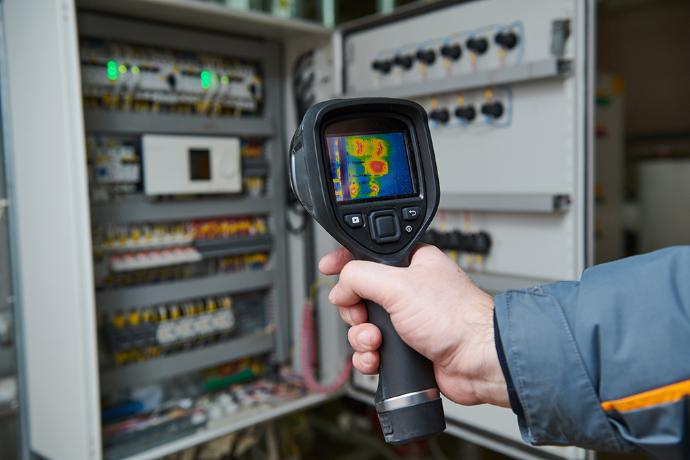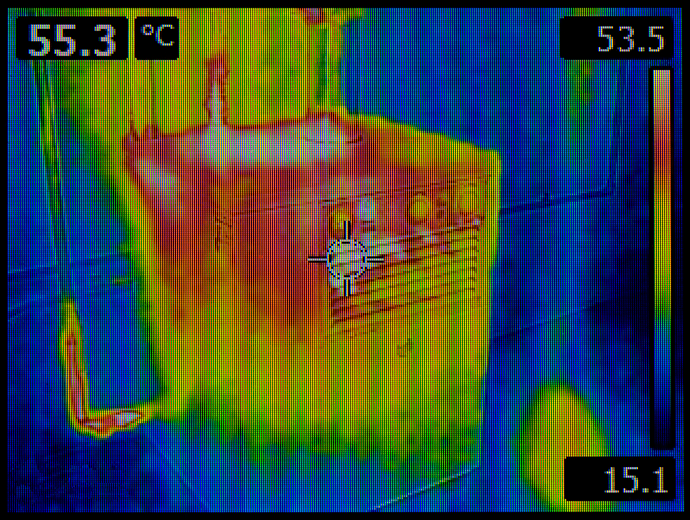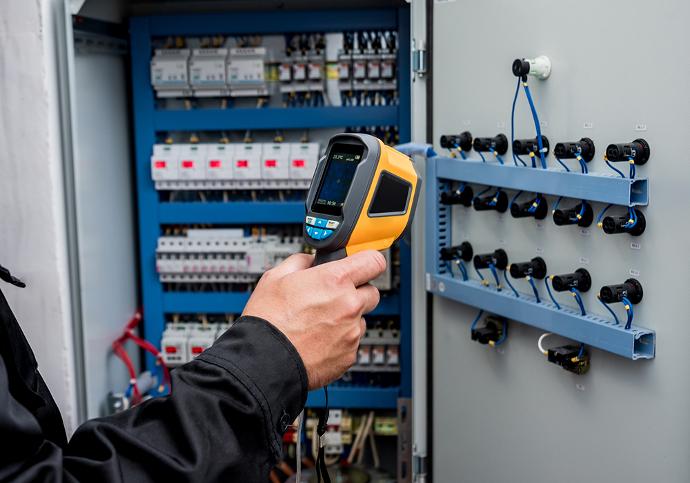Thermography in Industrial and Electrical Maintenance
Thermography is a non-contact imaging technique that utilizes infrared radiation to create visual representations of temperature variations across surfaces. In industrial settings, thermography is utilized for predictive maintenance of machinery and equipment.
Industries that use Thermography:
- Agriculture processing and handling
- Food Production
- Industrial - flow and batch process
- Manufacturing
- Mining
- Pharmaceutical
- Water, Waste Water and Utilities


Protect your production without interruption
Also known as thermal imaging, thermography is a proven, preventative tool used in industrial automation and electrical systems. It provides valuable insights into the operational status of machinery, equipment, and processes which enables early detection of issues. Save money and increase equipment lifespan with predictive maintenance and optimization of production processes. Catch the problem before it becomes costly downtime or troubleshoot small problems before they become bigger.
By capturing thermal images of equipment, technicians can identify overheating components, friction-related issues, and potential failures before they lead to costly downtime. A regular preventive approach aids in optimizing maintenance schedules and reducing operational disruptions.
Top 5 Reasons to Implement
Thermography of electrical equipment is important for various reasons, especially in maintenance and safety practices. Here are five key reasons why thermography is crucial:
1. Early detection of electrical faults: Thermography allows for the non-contact measurement of surface temperatures, which helps identify hotspots in electrical equipment. Hotspots can be indicative of loose connections, overloaded circuits, imbalanced loads, or faulty components. Detecting these issues early can prevent equipment failure, breakdowns, and potential fires.
2. Preventive maintenance: Regular thermographic inspections enable predictive maintenance of electrical systems. By identifying potential issues before they escalate, maintenance teams can schedule repairs and replacements proactively. This approach reduces downtime and prevents costly emergency repairs, improving the overall reliability and efficiency of electrical systems.
3. Safety improvement: Electrical faults often generate
excessive heat, which can lead to dangerous situations, including fire hazards
and electric shocks. By identifying and addressing hotspots through
thermography, potential safety risks can be mitigated, protecting both
personnel and property from accidents and injuries.
4. Energy efficiency optimization: Inefficient electrical connections and equipment can waste energy, leading to increased operational costs. By using thermography to identify and rectify energy losses caused by issues like poor connections, harmonics, or equipment inefficiencies, organizations can improve energy efficiency, reduce electricity consumption, and lower utility bills.
5. Compliance with regulations and standards: Many industries and jurisdictions have specific safety regulations and standards related to electrical equipment maintenance and inspections. Thermography is often recognized as an effective method for compliance with these requirements. Regular thermographic assessments demonstrate a commitment to safety and can help avoid potential legal liabilities.
